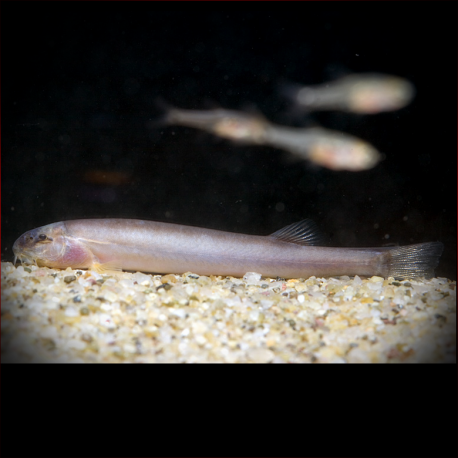More info
Datasheet
| Minimum Tank Size | 90 litres / 23.78 US gallons |
| Maximum Size | 9.0cm / 3.54inches |
| Temperature | 22°C / 71.60°F - 26°C / 78.80°F |
| Hardness | 2.02dgH / 36ppm - 10.03dgH / 179ppm |
| pH | 5.5-7.5 |
General Description
Lepidocephalus Macrochir, commonly known as the "pinky loach" or "Borneo high body cave loach," is a species sporadically available in the aquarium trade. Belonging to the family Cobitidae, it can grow up to 9.0cm in size and is recognized for its peaceful nature towards both conspecifics and other tankmates. The species tends to be shy by nature, preferring the company of its own kind in groups of four or more individuals. It is important to note that while the pinky loach does not harm tankmates, it may feed on eggs or fry.
Aquarium Setup
To create a suitable habitat for Lepidocephalus Macrochir, a soft, sandy substrate is essential as these fish spend a considerable amount of time buried in the substrate. It is advisable to avoid coarse gravel to prevent stress and injuries. Decoration can include water-worn rocks, driftwood branches, and tree roots to provide hiding spots and shaded areas. Dim lighting is preferred, although additional lighting may be necessary for plant growth. The aquarium should have minimal flow rates, ensuring adequate oxygenation. Care should be taken to prevent small specimens from entering filter intakes, and secure tank lids are advised to prevent jumping, common in loaches.
Behaviour
With a reputation for peaceful behavior, the pinky loach thrives in the company of its own species. It is recommended to maintain them in groups of four or more. Their shy demeanor makes them vulnerable to aggressive feeders, emphasizing the importance of selecting tankmates carefully. The species may exhibit territorial behavior in the presence of conspecifics but generally poses no threat to other fish in the aquarium.
Feeding and Diet
While Lepidocephalus Macrochir can adapt to sinking dried foods, a varied diet is crucial for their health. They are micropredators in nature, feeding on insect larvae and small crustaceans. In captivity, they should be offered regular meals of small live and frozen foods such as Daphnia, Artemia, and bloodworms to ensure proper nutrition.
Reproduction & Dimorphism
Reproduction of Lepidocephalus Macrochir remains unreported in captivity. However, sexually mature males can be distinguished by the extension of the second pectoral fin ray. Females, especially when gravid, may appear deeper-bodied. Dimorphism in this species is subtle, with physical differences primarily noticeable in mature individuals.
Habitat and Distribution
The natural habitat of Lepidocephalus Macrochir includes deep waters, although confusion surrounds its exact distribution. Initially described from the Lamatang and Enim rivers in Sumatra, this species has also been recorded in Thailand, Peninsular Malaysia, Java, and Borneo. Their behavior in the aquarium, such as burrowing in soft substrates, aligns with reports of their natural habitat preferences.

